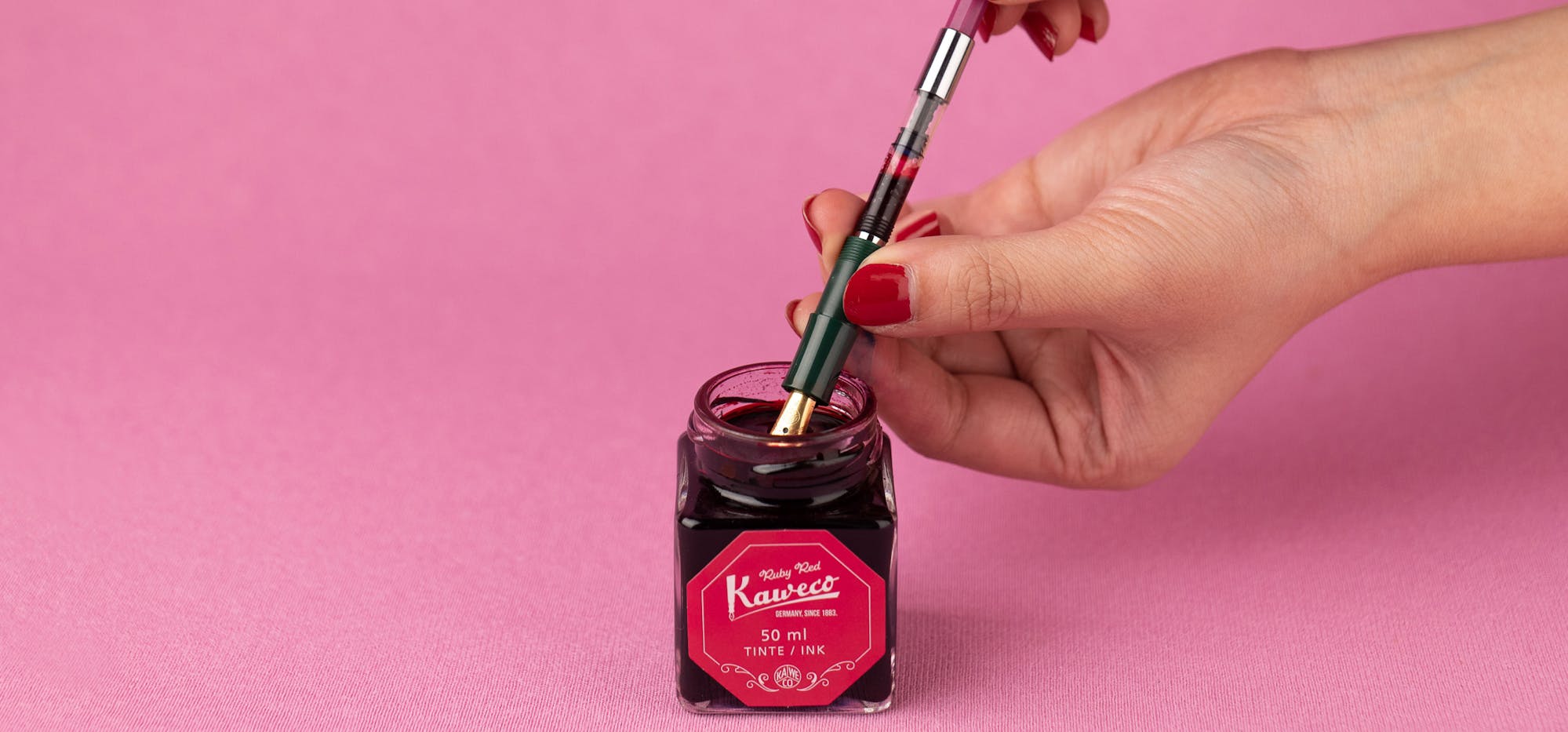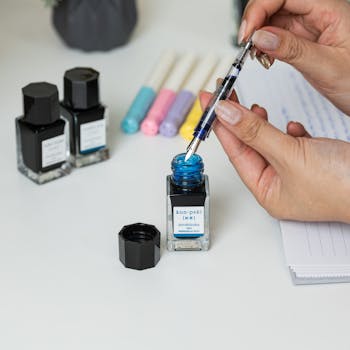
expert-guides,milligram-hotline
How to refill your fountain pen
Even after more than a century, the feel of a fountain pen still has yet to be equalled. The way they move gracefully over the page, leaving a rich, vivid line is a wonderful experience, but it does mean you'll be refilling your pen quite frequently to keep your pen flowing. Topping up your ink can seem a bit daunting, but we've put together a handy guide to take you through the process.
May 21, 2021
Using cartridges
Ink cartridges like those made by LAMY and Kaweco make it a breeze to top up your pen. All you need to do is twist your pen open at the middle, remove the empty ink cartridge and pop the new one in, and you're ready to write again. Just make sure you've got the right cartridge before you start, and check that it's around the same way as the one you're taking out to prevent messy surprises.
LAMY's ink cartridges make fountain pens easy
Using bottled ink
Bottled ink can be a touch more fiddly, but the range of colours you can choose from adds a whole new dimension to your handwriting, so the payoff is well worth a little extra effort.
First things first, you'll need a converter. Some premium pens like the LAMY 2000 or the TWSBI range are ready for bottled ink out of the box, but for most others, LAMY's Z28 or Kaweco's Piston Converter should be enough to get you started – just be sure to check the specs on your pen of choice so you can get off to a smooth start. In the guide below, you'll see Pilot's Kakuno with a CON-40 converter, but the same principles apply across the board.
Next comes choosing your ink, which is easily the most fun part of the process. Bottled ink comes in such a dizzying array of hues and textures that deciding which one to try next is part of the adventure, and you may well develop quite a collection of half-full ink bottles over time. The ink you see here is from the gorgeous Iroshizuku range, which is perfect for Japanese-made fountain pens like Pilot's; for European pen brands, higher-viscosity ink from LAMY, Jacques Herbin or Kaweco is a better fit.
Step 1 – Get ready
When you notice your pen starting to leave gaps on the page, it's time to fill 'er up. Having all your essentials in place before you start can save an ink refill from turning into a messy headache.


Step 1 – Get ready
When you notice your pen starting to leave gaps on the page, it's time to fill 'er up. Having all your essentials in place before you start can save an ink refill from turning into a messy headache.

Step 2 – Open your pen
This part of the process is the same whether you're replacing a cartridge or refilling a converter, so if you've been using fountain pens for a while, you'll be right at home with this step.

Step 2 – Open your pen
This part of the process is the same whether you're replacing a cartridge or refilling a converter, so if you've been using fountain pens for a while, you'll be right at home with this step.
Step 3 – Get the plunger in place
Looking inside your converter, you'll see a small chamber that holds the ink. Inside that chamber is a small airtight plunger that looks like a snugly-fitted black disc. Twist the top of your converter until the plunger is pressed up against the bottom – that helps to push out any ink residue and prevents air bubbles from taking up precious space.


Step 3 – Get the plunger in place
Looking inside your converter, you'll see a small chamber that holds the ink. Inside that chamber is a small airtight plunger that looks like a snugly-fitted black disc. Twist the top of your converter until the plunger is pressed up against the bottom – that helps to push out any ink residue and prevents air bubbles from taking up precious space.

Step 4 – Dip the nib
Now that the plunger is in place, it's time to introduce your pen to the ink. Lower the pen into your ink of choice until the breather hole (the little circle in the middle of the nib) is submerged, and twist the plunger in the opposite direction so it draws back up. That action pulls the ink into your converter – keep twisting until the plunger stops at the top to get the most out of your refill.

Step 4 – Dip the nib
Now that the plunger is in place, it's time to introduce your pen to the ink. Lower the pen into your ink of choice until the breather hole (the little circle in the middle of the nib) is submerged, and twist the plunger in the opposite direction so it draws back up. That action pulls the ink into your converter – keep twisting until the plunger stops at the top to get the most out of your refill.
Step 5 – Put your pen back together
Now that your pen has a nice full tank, all that's left is to tidy up. Use the blotting paper or tissues to clean up any excess ink on the nib (and your fingers, if you're like us), and once you're all clean again, simply screw the body back onto your pen, and voila! Your pen is ready to write again.


Step 5 – Put your pen back together
Now that your pen has a nice full tank, all that's left is to tidy up. Use the blotting paper or tissues to clean up any excess ink on the nib (and your fingers, if you're like us), and once you're all clean again, simply screw the body back onto your pen, and voila! Your pen is ready to write again.
The only downside to bottled inks is that there are so many of them to try, and so little time. You'll find that different colours suit different moods, so healthy collection of bottled inks is a good companion for bullet journaling. Illustrators love the range of subtle shades that ink offers, too, helping to bring your drawings to life.
To get started, check out our range of bottled inks and find the hue that's right for you. We've also got converters to get that precious ink into your pen, and if you're ready for a pen upgrade, check out our range of world-class fountain pens.
If you have any questions about this guide, or about fountain pens and ink, send us an email and we'll get one of our expert staff to talk you through it.





